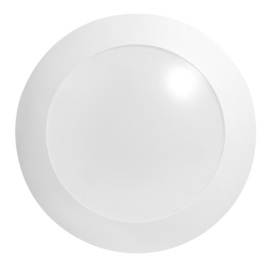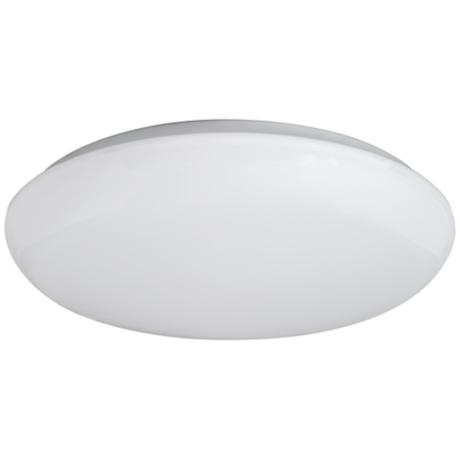In Portland, Oregon, public support of weatherization is managed by Energy Trust Of Oregon, and measure technical details for existing homes weatherization are in a Specifications Manual updated each year. The current rules are:
http://energytrust.org/library/forms/HES_WX_Manual_2013.pdf
At page labeled 13, find this statement for attic floors: Existing insulation levels shall be R-12 or less to be eligible for incentives.
That's it, a rule addressed in this post.
Energy Trust claims there is math behind this rule, but as with any rule, can't produce it for me. In the past, blame for this was placed upon the Regional Technical Forum of Bonneville Power Administration. Now, Energy Trust takes the blame. They have done no math proving added insulation from R11 pays, but not from R12. I can understand that nothing done by Energy Trust makes sense, where they spend $20 million per year and treat only 2000 homes.
Here is R12 math similar to that which challenged BPA/ RTF, first posted in September 2010, never acknowledged. The arrogance of BPA and now Energy Trust, is not excusable. Energy Trust has no concept of math to justify its rules. It isn't difficult. The big variable is the applied cost of energy, where I choose $2 per therm, for natural gas heat. We may not use actual subsidized consumer cost, cheap by military adventure, with ruin forever of clean water, and with murderous blunt force against people who protest. Such wickedly cheap fuel will be gone in less than ten years. Weatherization measures must be based on a horizon of perhaps fifty years. Measures must be sturdy. Please wake up, Oregon Public Utilities Commission, if you are to blame in a hurtful payback consideration, with too-low cost of energy, for long time span.

Adjust the four-year old math of R19 to R38 addition, where insulation cost has risen 28%.

In this comparison by reasonable, consistent, simplified math, I do not see reason for change of policy from rebates for under R19, to under R12. The result is purely harmful, as excuse to do nothing in many attics.
What matters in considering when to add some attic insulation, is that all important work must be done first, that will be impaired or prohibited by the added insulation. I think I can demonstrate for any attic, that other measures at risk by added insulation, have greater returns and payback rate, than that of the added insulation. Someone fixing the attic floor for very good reasons, and then topping up insulation, should not be discouraged in reporting this to those monitoring weatherization progress. A problem here is that rebates are offered at all. The need is for our homes to be made as energy efficient as any owner wishes, with acknowledgement and with good consequence in matters of house sale, taxes and financing.
Please look at lessons in this post:
2013 Federal Residential Energy Efficiency Tax Credit
Incentives at all levels must not stress the addition of insulation. And, who has read this? Surely not Energy Trust Of Oregon. I pay attention, and do not recall sign anyone who has resorted to the refund-useful links, went further to examine links for the lesson expressed. What is wrong with us?
In the previous post , the relative importance of other measures and of adding insulation were mentioned once again, but were not demonstrated. Do that demonstration, now.
Six awful can lights in an attic floor were replaced with beautiful, much-brighter LEDs, saving $18 per year each, in three-year payback. To relate this and all measures other than adding insulation to same basis I invent "equivalent bare area coverage."
What is the equivalent in bare-area coverage to R38, that saves six times $18 per year? This is the savings opportunity with replacement LED lights.
2.4*Area * (1/3 - 1/41) = 6*$18
Area = 145 sf, out of 1264 sf floor area.
Trampling and rebuilding all loose fill in this attic will permit insulation of 200 sf on before-unreachable attic walls. Insulation value goes from none, to R30. Bare area equivalent, about 200 sf.
The effect of sealing wall headers may also be estimated in equivalent bare area fully insulated. Say the area both sides of interior walls is the same as attic floor area, and stilling leakage/ floor pit bathing, is 10% of that which would occur if interior walls were directly open to the attic, 126 sf. In this, use further simplification, that interior wall area, two sides, is same as attic floor area. This is very unscientific, and none of the assumptions deserve sharpening for specific home details. Bare area equivalent as 10% of floor area gives an appropriate degree of importance.
The bare-area equivalent of insulating the attic floor from R10 to R38 is:
Area/3 = 1264(1/13 - 1/41)
Area = 199 sf.
Total bare area equivalents are 145 + 200 + 126 + 199 = 670 sf.
Annual dollar savings in eliminating these bare areas are:
$2.4 * Bare Area/3 = $0.8 * Bare Area
$116 + 160 + 101 + 159 = $536
22% in fixing six lights. 30% in fixing attic walls. 19% in sealing wall headers. 29% in adding insulation. More than two thirds of weatherization savings come from other than adding insulation, here and in most homes.































